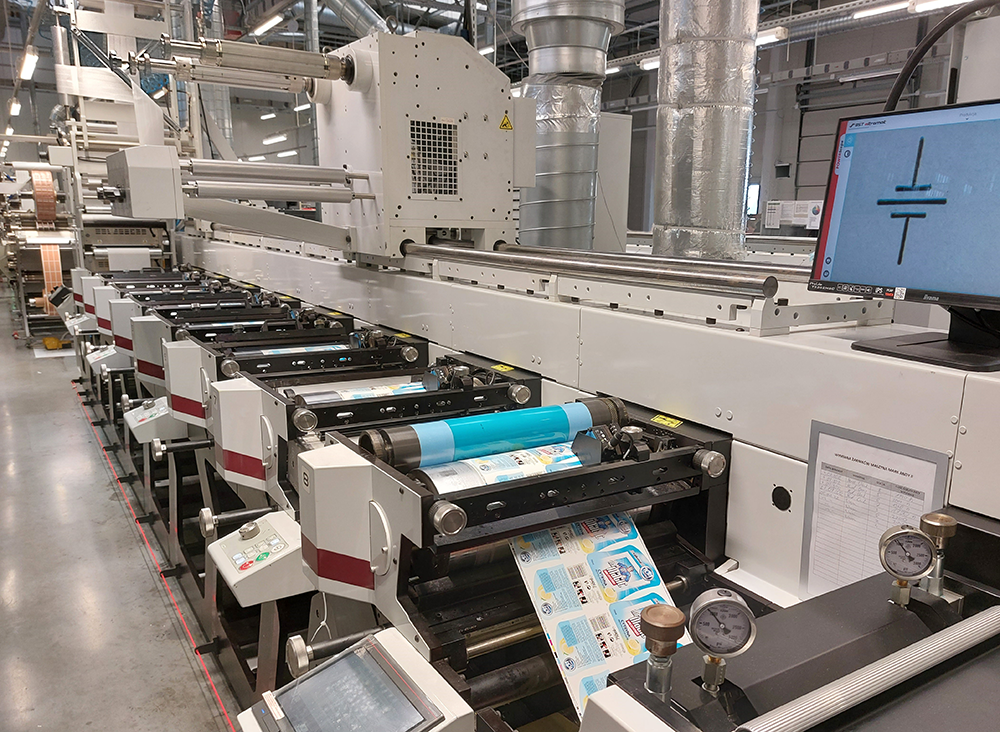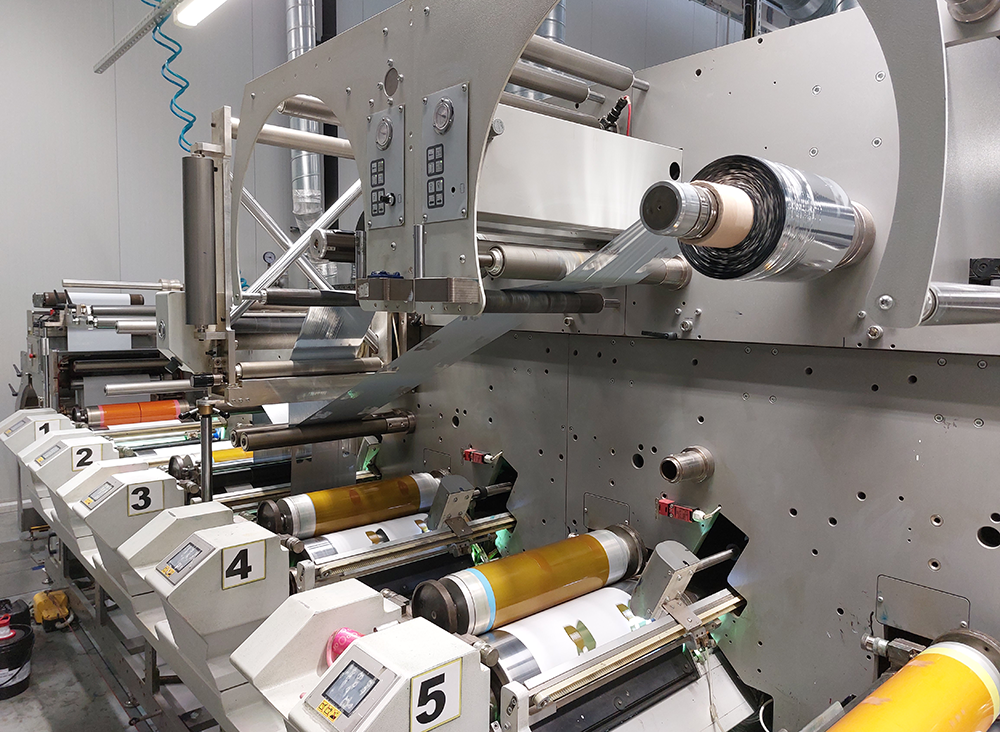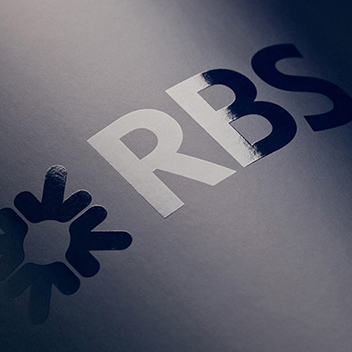Technology
Flexography is a relief printing technique in which the printing areas are positioned higher on the mould compared to the non-printing areas. The technique is similar to letterpress printing, but uses rubber moulds instead of metal moulds. In addition, flexography uses photopolymer moulds. These moulds, in both rubber and photopolymer versions, can be produced using CTP systems or conventional techniques.
The printing unit of a flexographic printing machine consists of a steel printing cylinder without a mount paper and a mould cylinder, onto which the mould is applied in a manner resulting from its manufacturing technology. The ink unit of a flexographic machine consists of an ink roller, an ‘’anilox‘’ roll, an inkwell and a tank. The ink roller is partially immersed in the ink and collects it by rotating. It is in contact with the anilox, the surface of which is characterised by identical hollows. The doctor blade is used to pull excess ink off the anilox, which is in direct contact with the printing mould. The ink is then transferred from the mould to the substrate, which is assisted by the pressure exerted by the pressure cylinder. Flexographic printing is used primarily for packaging on substrates of corrugated board, solid board, foil, paper, plastic and aluminium.


Print enrichments
Print enrichment is the process of coating the printing substrate with various substances or materials. Print enrichment can be applied to both printed and unprinted areas. For this purpose, the most common materials used are varnishes, inks, foils and pigments.
Enrichment is used primarily for:
- enhancing the visual qualities of the surface
- increasing the resistance of the surface to aggressive environmental factors, such as light, moisture, water, oxidation
- imparting specific qualities
Types of print enrichments at Etigraf company:

Cold-stamping
Cold-stamping is a printing technique using a foil produced for this purpose and a suitable adhesive. The adhesive is applied using a flexographic method precisely in the areas that we want to print (enrich with foil). After the adhesive „surprinted” is pressed onto the adhesive layer of the foil, the dye is detached from the base layer using UV lamps to activate the adhesive. Cold-stamping is used for print enrichment, marking or product protection. A major advantage of using cold-stamping foil is the possibility to print with ink and enriching the print with the foil on-line. Cold-stamping allows for printing of tonal gradients and the printing of the foil itself with ink for additional colour effects.

Laminating
Lamination involves coating the surface of a material with a cold foil (the laminate). A wide variety of foils are available, including matt, glossy, scratch-resistant, metallised, structured, holographic or barrier foils. Very popular is the soft touch foil, which is particularly velvety and soft to the touch.
The main advantages of label lamination are:
- high resistance to print abrasion and smearing
- protection against delamination by humidity
- resistance to external factors
- greater durability in contact with the product on which the label is applied (e.g., greasy cream, cooking oil)
- improved label aesthetics and possibility of choosing the finishing

Varnishes
Varnishing a print serves to increase its attractiveness and quality. It protects the surface against ink abrasion and makes it more shiny or matt. It increases its stiffness and enlivens the colour. Among the various types of varnish, UV varnishes, i.e., varnishes cured by ultraviolet rays, are very popular. They are composed of modified resins, photoinitiators and additives that modify the optical properties. They can be divided into glossy and matt, adhesive and cationic, which are suitable for food products. Gloss varnishes can be used on polyolefin, paper and cardboard substrates. They have wetting and gliding properties. Also, they give the surface a high gloss and do not yellow in time. What’s even more, they are resistant to all chemicals. Matt varnishes, on the other hand, are suitable for absorbent and non-absorbent substrates and can be further printed, laminated or gilded. In addition, UV varnishes improve the adhesion of paints to metallised substrates and PET foils, and also have a low viscosity. They can be used on plastics.

Screen printing
Screen printing is ideally suited wherever a high degree of coverage, precise detail reproduction and colour intensity are required to produce an excellent, high-quality image. Coating enables special reliefs and other effects to be created. Scented coatings, thermochromic and glossy inks are just a few examples of screen printing applications. A particular feature of screen printing is its ability to produce what is known as a ‘’no-label look‘’ with transparent labels applied to packaging. Screen printing also allows Braille to be used on any label.


